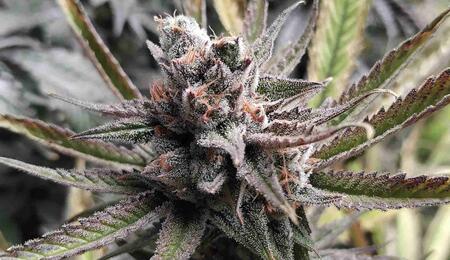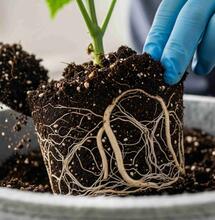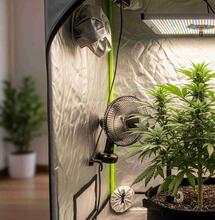11 Top Tips for Flowering Your Outdoor Plants in 2025

If you are growing outdoors this year, you will have noticed that your plants are producing the first set of pre-flowers. This means that now the fun really begins, and over the next few months, your outdoor plants will start producing buds! In this article, I provide 11 top tips to help you grow the best outdoor crop possible in 2025 and make sure all your hard work pays off big time.
Do Not Water When It’s Hot
From my experience growing outdoors, it is always best to water your plants in the morning or the evening. The reason is that during this part of the day, the plants will have the least amount of heat present and the level of transpiration will be minimal, compared to watering during 12 - 4 pm. If you can water your plants early in the morning, I recommend doing so around 9am before sunrise. Alternatively, if the evening is more practical, water them during sunset.
Avoid Any Type of Light Breaks
Cannabis plants are sensitive to light breaks, which simply means that during the darkness period, they become exposed to an external light source. This means terrace lights, car headlights or even street lamps can cause a disruption and may cause the plants to become hermaphrodites.
A hermaphrodite occurs when plants produce both male and female flowers, resulting in a seeded crop and increasing the risk of pollination. Do your very best to keep the plants in total darkness once the sun goes down.
Using Aerated Compost Teas
Aerated teas do wonders for the soil food web and also significantly enhance plant health and vitality. Aerated compost teas work by allowing beneficial bacteria and microbes present in compost or worm castings to become aerated over 24 hours using an air pump and air stone.
The dissolved oxygen in the pump turns the microbial count from millions into billions, resulting in a supercharged growing medium. Making aerated tea is simple and ideal for plants that have suffered from heat stress or soil that is not rich.
Take It Easy With Bat Guano
Using bat guano when flowering cannabis is a great way to enhance the flavour and terpenes. Suppose you are using bat guano this year. In that case, I recommend taking it easy and feeding small amounts as a top dressing or once a week with a mild solution.
The reason is that bat guano can cause plants to burn and result in toxicity in a short time frame. I find that mixing worm castings with a teaspoon of powdered bat guano and applying it as a top dressing every 7 days works a treat and produces healthy and vibrant flowering plants.
Check for Insects and Larvae
There is nothing worse than seeing your precious plants become lunch for insects and pests like grasshoppers, crickets, and, worst of all, caterpillars. I would recommend beginning to check your plants daily by inspecting the tops and undersides of the leaves for signs of bite marks, insect trails and signs of eggs or larvae.
If you notice that caterpillars are eating your buds, then use Bacillus thuringiensis (Bt), which are microbial spores. Mix with water and spray the damaged parts of the plants; this will kill the caterpillars if they continue eating the leaves and buds.
Do Not Repot Autoflowering Plants
If you are growing autoflowers, then avoid repotting them once they have started flowering. Unlike photoperiod plants that thrive in a new size pot with fresh growing medium, autoflowering cannabis plants do not react well to repotting, and the plants will become stunted or begin to grow back slowly. The best advice I can give you is to always germinate autos in large-sized pots and do not disturb the roots once they are over 4 weeks old.
Inoculate the Growing Medium
One of my favourite ways to make sure that my growing medium is full of beneficial bacteria, microbes, and fungi is to use a powdered or granular inoculant. There are two ways to inoculate your growing medium.
The first step is to apply a top dressing using either the powdered spores or the granular version, and then gently mix it into the top layer of your soil or a custom organic mix. The second method involves making an aerated tea. To do this, follow the same process as for an aerated compost tea: add the powdered spores to the water, brew for 24 hours, and then lightly drench the soil.
No More Plant Training
Plant training is an excellent way to change the growth structure of your outdoor plants, without affecting terpene or cannabinoid production. However, once your plants stretch and transition to the flowering stage, you should avoid super cropping, topping and fimming them. Defoliation and pruning can still be applied, but I generally use all my plant training techniques during the vegetation stage to avoid inflicting any stress on the plants during bloom.
Monitor for Nutrient Burn
Overfeeding your cannabis plants is easily done, especially when your intention is to give your plants as many nutrients as possible. During the flowering period, cannabis plants require higher levels of phosphorus and potassium to produce those fat and chunky colas we desire.
If you notice your plants showing signs of nutrient burn, check the pH levels to ensure you are not experiencing a nutrient lockout. Then, start flushing with water to wash out the excess salts causing the burn. MSNL advises that if it is mild, five to ten days is usually enough for the plant to bounce back. If it is severe, recovery time can be up to twenty days.
Remove Mouldy Buds
During the final 3 weeks of flower production, your plants may become mouldy due to poor air flow and high humidity levels. Mould can spread very quickly, and before you know it, it can cause your cola to become soft and take on a candy floss texture. Moulding buds cannot be smoked, or even used for hash making or extracts.
If you notice that your buds are suffering from mould, then you will need to take a sharp pair of scissors and carefully cut the buds away and throw them in the bin. The only way to prevent mould from spreading is to ensure fresh air circulates around the buds and that no water or moisture enters the colas.
My Conclusion
Outdoor-grown cannabis is one of the greatest pleasures a grower can experience; however, there are a lot of things that can go wrong between the start of bloom and the harvest date. Water during the coolest parts of the day. Check for any potential light breaks during the nighttime. Use inoculants, aerated compost tea, and double-check daily for insect damage and signs of eggs or larvae.
Do not overfeed your plants. Check the pH levels of your nutrient solution after each preparation. If using bat guano, use a teaspoon as a top dressing for the best results. Good luck flowering your outdoor crop this year, and enjoying those sungrown, smooth-tasting buds



